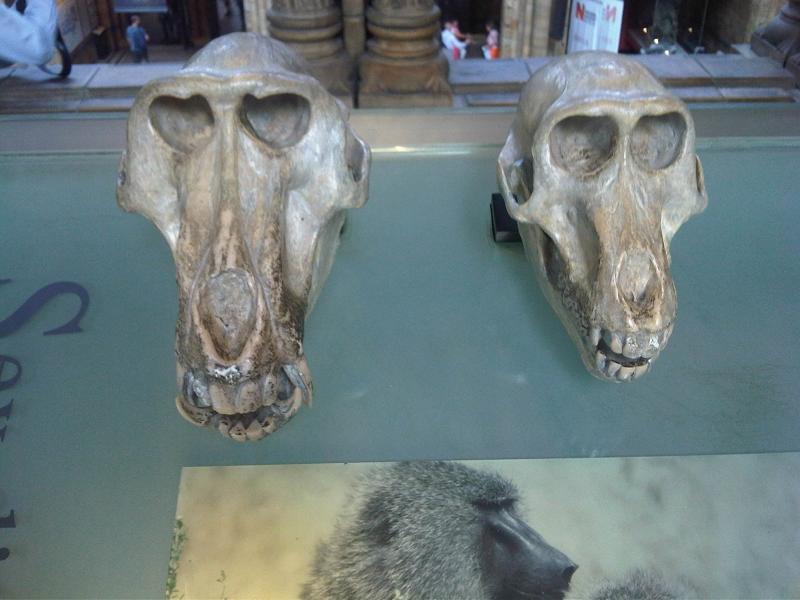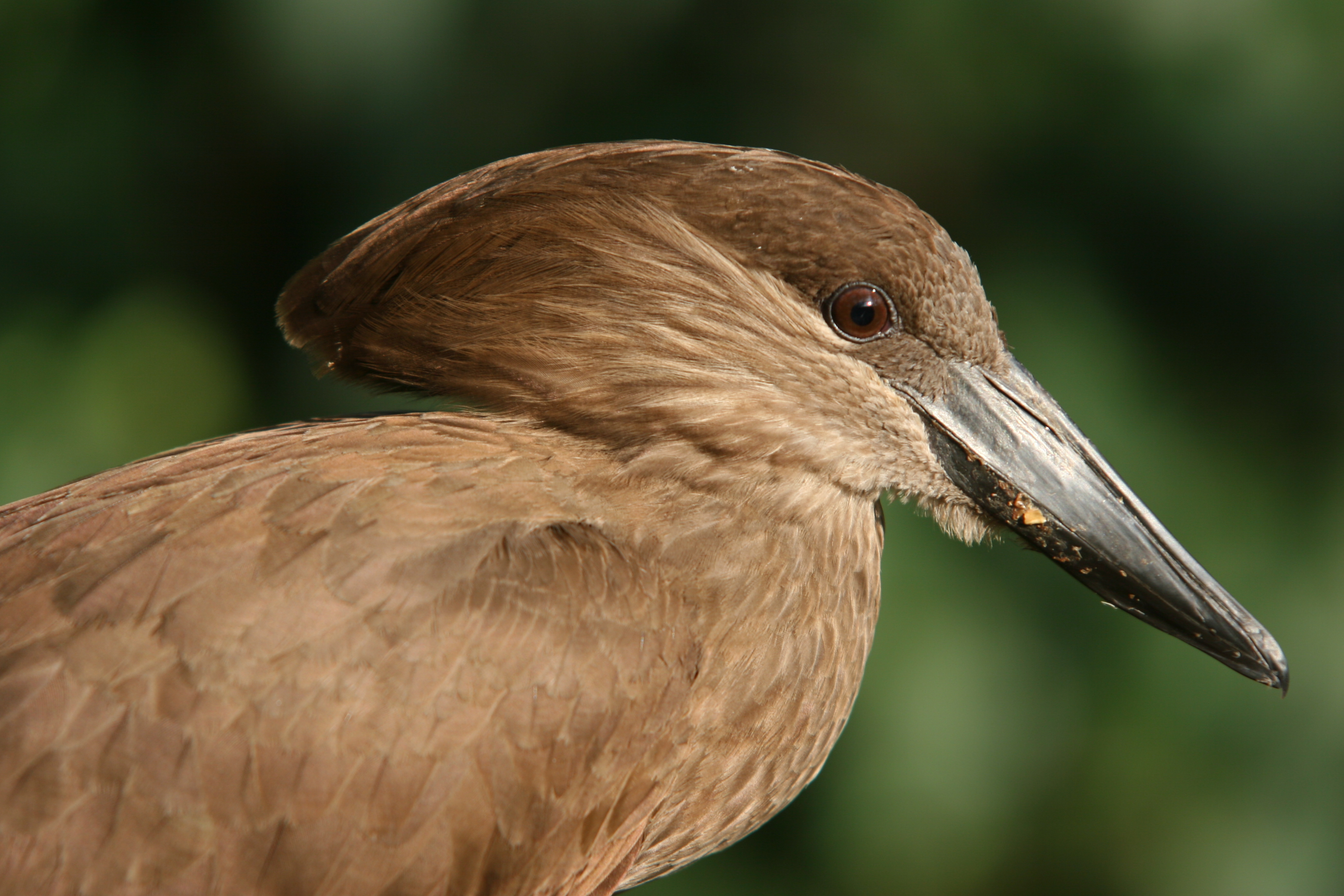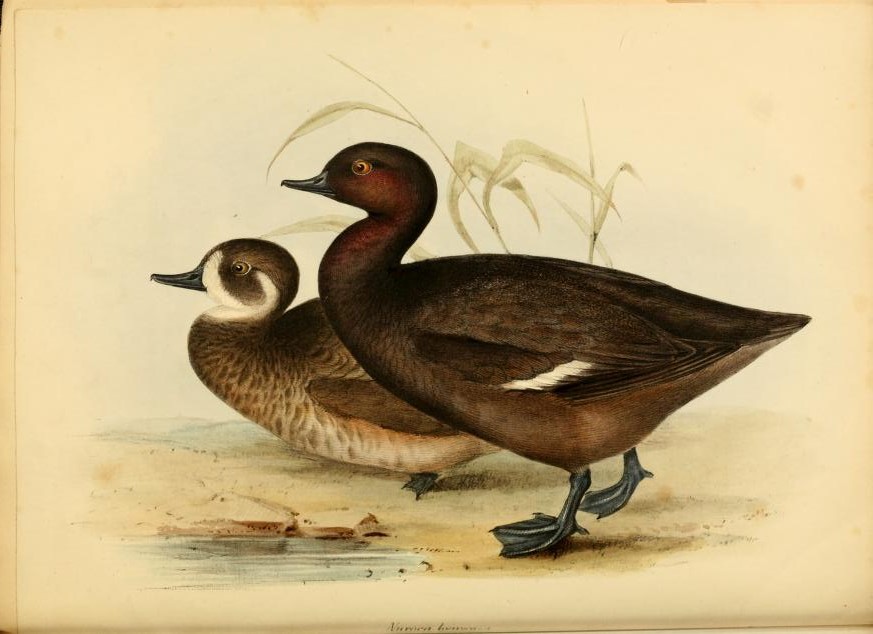|
Marsabit National Park
The Marsabit National Park is a national park and nature reserve located at Mount Marsabit in northern Kenya, near the town of Marsabit. It is located 560 km north of Nairobi in Marsabit County in the former Eastern Province and its reserve is noted for its zebra population and bird sanctuary. Geography The area contains a number of extinct volcanic craters, which are covered in forests. There is a crater in the vicinity named Gof Redo, roughly north of Marsabit in the fork of the roads to Moyale and North Horr. Flora and fauna Zebras, elephant, lions, giraffes, buffaloes, black and white colobus, blue monkeys, bushbucks, sunis, and leopards populate the park. The park contains some 350 species of birds in total, of which 52 are birds of prey. The cliffs in the northern end of Lake Paradise, in Gof Sokorte Gurda, are home to a number of birds, including Ruppell's griffon vultures, peregrine falcons, mountain buzzards, black kites and African fish eagles. Ducks such as ... [...More Info...] [...Related Items...] OR: [Wikipedia] [Google] [Baidu] |
Eastern Province (Kenya)
The Eastern Province ( sw, Mashariki) of Kenya was one of 8 Provinces of Kenya. Its northern boundary ran along with that of Ethiopia; the North Eastern Province and Coast Province lay to the east and south; and the remainder of Kenya's provinces, including Central Province, ran along its western border. The provincial capital was Embu. Overview On 16 July 2009, the province was sub-divided into 3 Sub-Provinces namely lower eastern with Machakos as headquarters, central eastern with Meru as headquarters, and upper eastern with Marsabit as headquarters; however those changes never took effect due to the political wrangles in the Kenyan coalition government at the time. The sub-division of provinces were carried out in all seven Provinces of Kenya, excluding Nairobi. As of March 2013 after the Kenyan general election, 2013, the Eastern Province was subdivided into 8 counties namely: The province was principally inhabited by the Meru, Kamba and Embu and several pastoralis ... [...More Info...] [...Related Items...] OR: [Wikipedia] [Google] [Baidu] |
Peregrine Falcon
The peregrine falcon (''Falco peregrinus''), also known as the peregrine, and historically as the duck hawk in North America, is a Cosmopolitan distribution, cosmopolitan bird of prey (Bird of prey, raptor) in the family (biology), family Falconidae. A large, Corvus (genus), crow-sized falcon, it has a blue-grey back, barred white underparts, and a black head. The peregrine is renowned for its speed, reaching over during its characteristic hunting stoop (high-speed dive), making it the fastest bird in the world, as well as the Fastest animals, fastest member of the animal kingdom. According to a ''National Geographic (U.S. TV channel), National Geographic'' TV program, the highest measured speed of a peregrine falcon is . As is typical for avivore, bird-eating raptors, peregrine falcons are Sexual dimorphism, sexually dimorphic, with females being considerably larger than males. The peregrine's breeding range includes land regions from the Arctic tundra to the tropics. It can b ... [...More Info...] [...Related Items...] OR: [Wikipedia] [Google] [Baidu] |
Vervet Monkey
The vervet monkey (''Chlorocebus pygerythrus''), or simply vervet, is an Old World monkey of the family Cercopithecidae native to Africa. The term "vervet" is also used to refer to all the members of the genus ''Chlorocebus''. The five distinct subspecies can be found mostly throughout Southern Africa, as well as some of the eastern countries. Vervets were introduced to Florida, St. Kitts and Nevis, Barbados, and Cape Verde. These mostly herbivorous monkeys have black faces and grey body hair color, ranging in body length from about for females, to about for males. In addition to behavioral research on natural populations, vervet monkeys serve as a nonhuman primate model for understanding genetic and social behaviors of humans. They have been noted for having human-like characteristics, such as hypertension, anxiety, and social and dependent alcohol (drug), alcohol use. Vervets live in social groups ranging from 10 to 70 individuals, with males moving to other groups at the tim ... [...More Info...] [...Related Items...] OR: [Wikipedia] [Google] [Baidu] |
Olive Baboon
The olive baboon (''Papio anubis''), also called the Anubis baboon, is a member of the family Cercopithecidae Old World monkeys. The species is the most wide-ranging of all baboons, being native to 25 countries throughout Africa, extending from Mali eastward to Ethiopia and Tanzania. Isolated populations are also present in some mountainous regions of the Sahara. It inhabits savannahs, steppes, and forests. The common name is derived from its coat colour, which is a shade of green-grey at a distance. A variety of communications, vocal and non-vocal, facilitate a complex social structure. Characteristics The olive baboon is named for its coat, which, at a distance, is a shade of green-grey. At closer range, its coat is multicoloured, due to rings of yellow-brown and black on the hairs. The hair on the baboon's face is coarser and ranges from dark grey to black. This coloration is shared by both sexes, although males have a mane of longer hair that tapers down to ordinary length ... [...More Info...] [...Related Items...] OR: [Wikipedia] [Google] [Baidu] |
Yellow-billed Stork
The yellow-billed stork (''Mycteria ibis''), sometimes also called the wood stork or wood ibis, is a large African wading stork species in the family Ciconiidae. It is widespread in regions south of the Sahara and also occurs in Madagascar. Taxonomy and evolution The yellow-billed stork is closely related to three other species in the genus ''Mycteria'': the Wood stork, American woodstork (''Mycteria americana''), the milky stork (''Mycteria cinerea'') and the painted stork (''Mycteria leucocephala''). It is classified as belonging to one clade with these three other speciesPetersKahl, ''Ibis'' because they all display remarkable Homology (biology), homologies in behavior and morphology (biology), morphology. In one analytical study of feeding and courtship behaviours of the wood-stork family, M.P. Kahl attributed the same general ethology to all members of the genus ''Mycteria'', with relatively few species-specific variations. These four species are collectively referred to as ... [...More Info...] [...Related Items...] OR: [Wikipedia] [Google] [Baidu] |
Ibis
The ibises () (collective plural ibis; classical plurals ibides and ibes) are a group of long-legged wading birds in the family Threskiornithidae, that inhabit wetlands, forests and plains. "Ibis" derives from the Latin and Ancient Greek word for this group of birds. It also occurs in the scientific name of the cattle egret (''Bubulcus ibis'') mistakenly identified in 1757 as being the sacred ibis. Description Ibises all have long, downcurved bills, and usually feed as a group, probing mud for food items, usually crustaceans. They are monogamous and highly territorial while nesting and feeding. Most nest in trees, often with spoonbills or herons. All extant species are capable of flight, but two extinct genera were flightless, namely the kiwi-like ''Apteribis'' in the Hawaiian Islands, and the peculiar '' Xenicibis'' in Jamaica. The word ''ibis'' comes from Latin ''ibis'' from Greek ἶβις ''ibis'' from Egyptian ''hb'', ''hīb''. Beekes, R. S. P. (2009) ''Etymological Dicti ... [...More Info...] [...Related Items...] OR: [Wikipedia] [Google] [Baidu] |
Hamerkop
The hamerkop (''Scopus umbretta'') is a medium-sized wading bird. It is the only living species in the genus ''Scopus'' and the family Scopidae. The species and family was long thought to sit with the Ciconiiformes but is now placed with the Pelecaniformes, and its closest relatives are thought to be the pelicans and the shoebill. The shape of its head with a long bill and crest at the back is reminiscent of a hammer, which has given this species its name after the Afrikaans word for hammerhead. It is a medium-sized waterbird with brown plumage. It is found in Africa, Madagascar and Arabia, living in a wide variety of wetlands, including estuaries, lakesides, fish ponds, riverbanks, and rocky coasts. The hamerkop is a sedentary bird that often shows local movements. The hamerkop takes a wide range of prey, mostly fish and amphibians, but shrimps, insects and rodents are taken too. Prey is usually hunted in shallow water, either by sight or touch, but the species is adaptable a ... [...More Info...] [...Related Items...] OR: [Wikipedia] [Google] [Baidu] |
Red-knobbed Coot
The red-knobbed coot or crested coot, (''Fulica cristata''), is a member of the rail and crake bird family, the Rallidae. It is a resident breeder across much of Africa and in southernmost Spain on freshwater lakes and ponds. It builds a nest of dead reeds near the water's edge or more commonly afloat, laying about 7 eggs (or more in good conditions).Liversidge, Richard. “The birds around us: Birds of the Southern African region” Pub: Fontein 1991 Taxonomy The red-knobbed coot was formally described in 1789 by the German naturalist Johann Friedrich Gmelin in his revised and expanded edition of Carl Linnaeus's ''Systema Naturae''. He placed it with all the other coots in the genus '' Fulica'' and coined the binomial name ''Fulica cristata''. Gmelin based his account on the earlier descriptions by the French naturalist Georges-Louis Leclerc, Comte de Buffon and the English ornithologist John Latham, neither of whom had included a binomial name. They gave the type locality ... [...More Info...] [...Related Items...] OR: [Wikipedia] [Google] [Baidu] |
Teal
alt=American teal duck (male), Green-winged teal (male) Teal is a greenish-blue colour. Its name comes from that of a bird — the Eurasian teal (''Anas crecca'') — which presents a similarly coloured stripe on its head. The word is often used colloquially to refer to shades of cyan in general. It can be created by mixing cyan into a green base, or deepened as needed with black or grey. The complementary colour of teal is pink. It is also one of the first group of 16 HTML/CSS web colors formulated in 1987. In the RGB model used to create colours on computer screens and televisions, teal is created by reducing the brightness of cyan to about one half. Teal was a fad colour during the 1990s, with, among others, many sports teams adopting the colour for their uniforms. Etymology The first recorded use of ''teal'' as a colour name in English was in 1917. The term ''teal'' (referring to a sort of duck) is derived from the Middle English ''tele'', a word akin to the Dutc ... [...More Info...] [...Related Items...] OR: [Wikipedia] [Google] [Baidu] |
Southern Pochard
The southern pochard (''Netta erythrophthalma'') is a species of duck, and a member of the genus ''Netta''. There are two subspecies, the South American (southern) pochard ''N. e. erythrophthalma'' (Wied-Neuwied, 1833) and the African (southern) pochard ''N. e. brunnea'' ( Eyton, 1838). The South American pochard has a fragmented range and is found from Colombia, Venezuela, Brazil, Ecuador, Peru, Bolivia and Argentina to Chile. Here it occurs in a wide variety of shallow fresh waters with submerged vegetation, from the lowlands up to 3,700 metres. The African pochard occurs from the Cape to the Ethiopian highlands on water bodies with or without emergent vegetation. They are suspected to have been strong migrants in the past but the construction of numerous farm dams seems to allow them a more sedentary lifestyle. They reach highest concentrations in Africa's central plateaus and in the south-western winter rainfall region. Taxonomy Two syntype specimens of ''Nyroca brunnea'' Ey ... [...More Info...] [...Related Items...] OR: [Wikipedia] [Google] [Baidu] |
Garganey
The garganey (''Spatula querquedula'') is a small dabbling duck. It breeds in much of Europe and across the Palearctic, but is strictly migratory, with the entire population moving to southern Africa, India (in particular Santragachi), Bangladesh (in the natural reservoirs of Sylhet district) and Australasia during the winter of the Northern hemisphere, where large flocks can occur. This species was first described by Carl Linnaeus in his landmark 1758 10th edition of ''Systema Naturae''. Like other small ducks such as the Eurasian teal, this species rises easily from the water with a fast twisting wader-like flight. Their breeding habitat is grassland adjacent to shallow marshes and steppe lakes. Taxonomy The first formal description of the garganey was by the Swedish naturalist Carl Linnaeus in 1758 in the tenth edition of his ''Systema Naturae''. He introduced the binomial name ''Anas querquedula''. A molecular phylogentic study comparing mitochondrial DNA sequences publis ... [...More Info...] [...Related Items...] OR: [Wikipedia] [Google] [Baidu] |








_in_AP_W_IMG_2844.jpg)